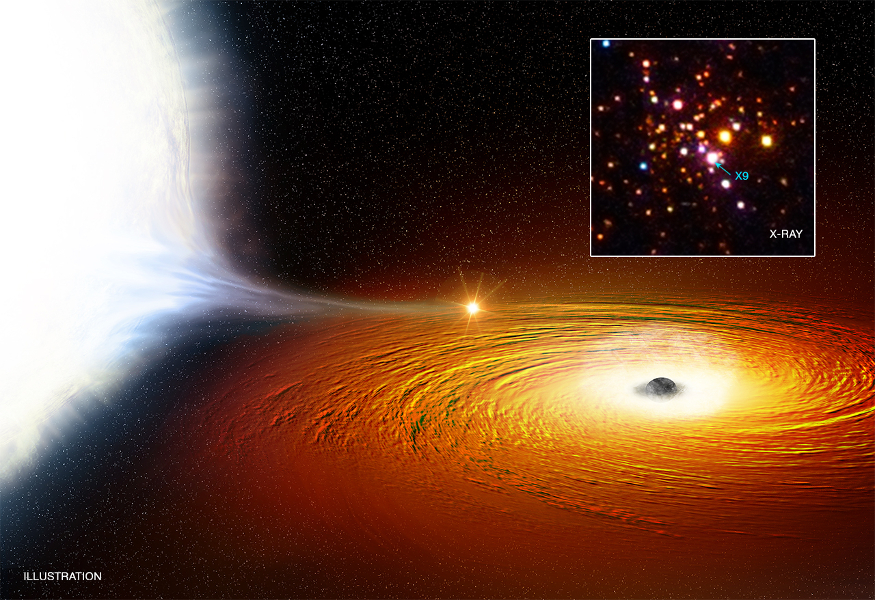
 Credit: X-ray: NASA/CXC/University of Alberta/A. Bahramian et al.; Illustration: NASA/CXC/M. Weiss
Credit: X-ray: NASA/CXC/University of Alberta/A. Bahramian et al.; Illustration: NASA/CXC/M. Weiss
Black and White
The globular cluster 47 Tucanae (in the southern constellation of Tucana, the toucan) is a massive group of roughly a million stars packed into a ball which is only 60 light years in radius. A number of strange objects lurk within this cluster, including rapidly spinning neutron stars and accreting systems in which an ultradense object strips material off a gravitationally-bound companion. Perhaps the most unusual of the strange objects in 47 Tuc is an X-ray emitting object called 47 Tuc X9. This object was first identified as an X-ray source in 2001 and originally thought to be a common type of low-mass X-ray binary consisting of a white dwarf which strips material off a normal low-mass companion star. However, followup radio observations of 47 Tuc with the Australian Telescope National Facility showed that the radio emission was unusually strong for a white dwarf system, but typical of the level of radio emission produced by accreting black holes. The radio and X-ray emission suggested that the donor star is not a normal low-mass star but rather a compact, ultradense white dwarf star, and the researchers predicted that the white dwarf companion would orbit the black hole with a period of only about a half an hour. Using the exquisite spatial resolution of the Chandra X-ray Observatory, astronomers were able to determine the variation of the X-ray emission from 47 Tuc X9 separate from other nearby cluster sources. They found the X-ray emission from X9 varied with a period of 28 minutes, almost exactly the period predicted in the radio study. The Chandra data also showed an excess of oxygen in the system, consistent with the composition of some white dwarfs. Evidently 47 Tuc X9 is a system in which a black hole pulls matter from some ultradense white dwarf. The short orbital period makes the white dwarf in X9 the closest star to a black hole that has yet been identified.
Published: March 20, 2017
<
HEA Dictionary ● Archive
● Search HEAPOW
● Other Languages
● HEAPOW on Facebook
● Download all Images
● Education ● HEAD
>

Each week the HEASARC
brings you new, exciting and beautiful images from X-ray and Gamma ray
astronomy. Check back each week and be sure to check out the HEAPOW archive!
Page Author: Dr. Michael F. Corcoran
Last modified Monday, 26-Feb-2024 17:20:05 EST


